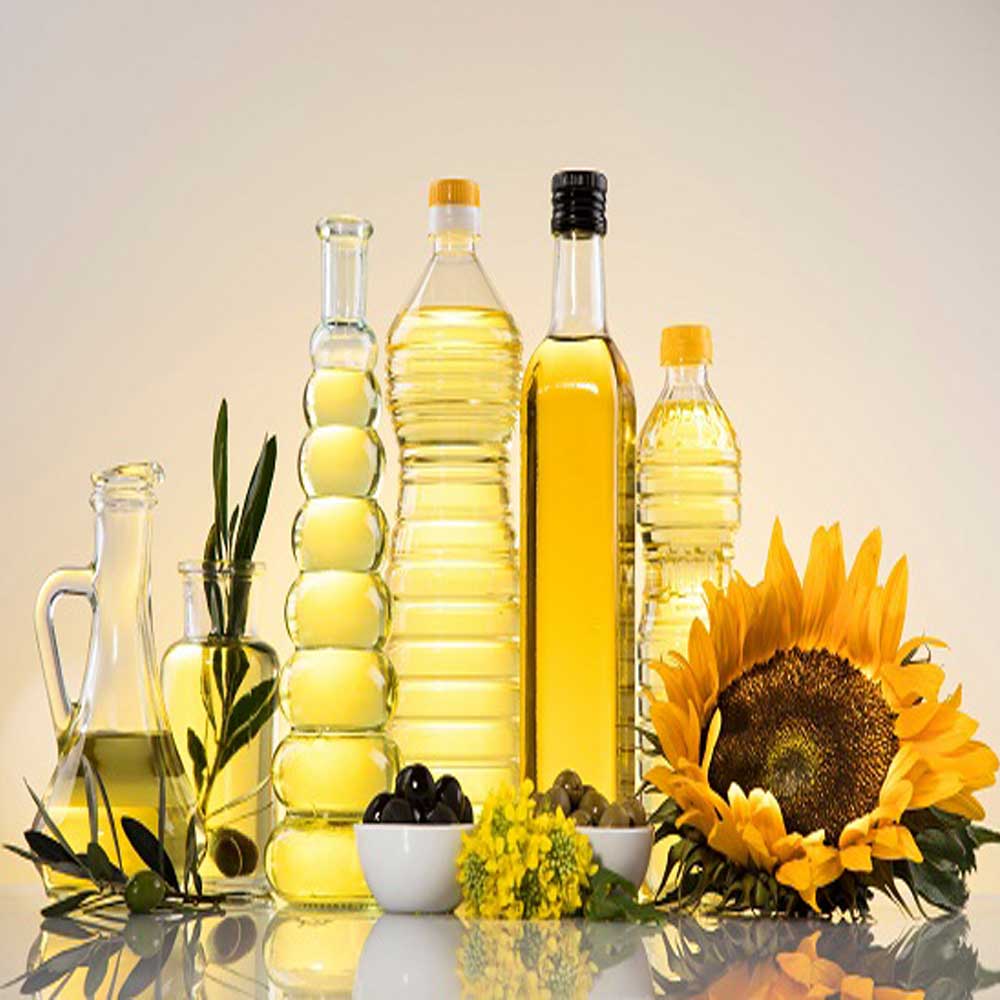Description
Sunflower Oil: Sunflower oil is the non-volatile oil pressed from the seeds of sunflower. Sunflower oil is commonly used in food as a frying oil, and in cosmetic formulations as an emollient. Sunflower oil is primarily composed of linoleic acid, a polyunsaturated fat, and oleic acid, a monounsaturated fat. While sunflower oil is easily available in all parts of the world now, not all types of sunflowers produce oils. Sunflower oil is extracted by crushing the seeds of the sunflower, but not all seeds contain oil. Sunflowers seeds are classified into two categories: oilseeds and non-oil seeds. it’s often used for sautéing, stir frying, deep frying and baking.
Canola & Rapeseed Oil: The rapeseed plant usually blooms in the summer and is famous for its golden-yellow flowers. Belonging to the cabbage family, it’s closely related to turnip and mustard. Its oil — known both as rapeseed and canola oil — is widely used for cooking, baking, and food processing. Industrial rapeseed oil is used in the automotive and chemical industries, while the culinary version is used for cooking. The two varieties are notably different due to their genetic makeup and content of erucic acid, which is harmful to your health in high amounts. In fact, to be called canola oil, it must contain an erucic acid level of 2% or less and meet internationally regulated standards. Otherwise, it will be labeled as “rapeseed oil.” However, most varieties in grocery stores are canola oil. It’s a great source of vitamin E, a potent antioxidant that supports skin and eye health. Rapeseed oil is also high in omega-6 fats, which support overall health when consumed in moderate amounts.
Olive Oil: Olive oil is a liquid fat obtained from olives, a traditional tree crop of the Mediterranean Basin, produced by pressing whole olives and extracting the oil. It is commonly used in cooking, for frying foods or as a salad dressing. Olive Oil Is Rich in Healthy Monounsaturated Fats. But the predominant fatty acid in olive oil is a monounsaturated fat called oleic acid, making up 73% of the total oil content. Studies suggest that oleic acid reduces inflammation and may even have beneficial effects on genes linked to cancer. Olive oil varies in color from clear yellow to golden; some varieties obtained from unripe fruit have a greenish tinge. Extra-virgin olive oil is made from pure, cold-pressed olives, whereas regular olive oil is a blend, including both cold-pressed and processed oils. EVOO is made by grinding olives into a paste, then pressing them to extract the oil. There’s no heat involved, hence the “cold-pressed” label you often encounter. Organic olive oil is the definition for the olive oil produced with organic processes, in accordance with EU regulations. This means firstly that the olives have been cultivated without chemical-synthetic fertilizers, plant protection products, and soil herbicides.
Note:
All our food products are USDA, FDA compliant. We source and can supply Organic Certified consumable products for our customers upon request.

